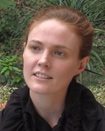New Media | 24 de febrero de 2014 | Vistas: 85
The world population is growing quickly. Every day, our cities become harder to live in. Poverty, pollution and massive migration are the result of archaic infrastructures that are failing to adapt to increasing inhabitant needs.
Fatimah Azzahra works at FR-EE, a company founded by Fernando Romero in 2000, that specializes in urban architectural design and social strategy. From its offices in Mexico and New York, this venture creates projects that are conscious of the challenges of urban living and community expansion. Architects at FR-EE believe in outlining preemptive strategies that address future urban growth. Sustainable infrastructures must be established from the beginning. In tune with these concepts, the company has created FR-EE City, a design proposal for a feasible, energy- efficient, ecologic urban district that is adaptable to systematic growth. Effective public transportation, enhanced user mobility, and absence of borders are key features that stimulate economic development and improve quality of life. Axial, hexagonal and grid designs combine to ensure modular building, ideal zoning and land use that can accommodate population changes. This design proposal is one among many that promise to change the way we establish cities.


Fatimah Azzahra works in Business and Research Development at Fernando Romero…
Nuestra misión es la enseñanza y difusión de los principios éticos, jurídicos y económicos de una sociedad de personas libres y responsables.
Universidad Francisco Marroquín